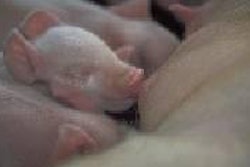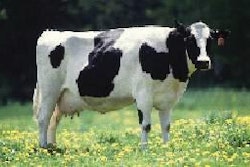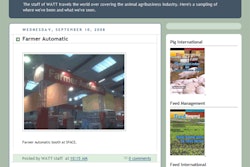Improved meat prices, good currency exchange rates, and growing meat consumption and exports are a few of the positive trends in Central and Eastern European countries after their integration into the European Union (EU). Investments in compound feed production systems and livestock production units continue and agriculture across the board is undergoing change.
Overall, since many of the feed additives segments in these areas are still at their developmental stages in Poland, market potential remains high.
Transformation
Poland is the Central/Eastern European hub of top-tier Western feed manufacturers and meat processors alike, and a major centre of European pig production. Live hog and cattle exports, which have increased by 50 percent since the country's accession to the EU in 2004, generate significant revenues, reaching EUR 218 million in that year alone. The Polish poultry sector is expected to show the strongest growth in coming years, and still may not be able to meet consumer demand as prosperity increases.
The Polish meat industry as a whole has undergone a dynamic transformation in terms of privatisation and profitability since the collapse of the Soviet Union. Poultry and pork prices are roughly comparable to the EU, but beef prices are stuck at half those of the Union. This is a reflection of low demand in the country, and poor productivity in the beef and dairy sectors, where industrial feed is barely used.
Sectors downstream of meat retail, such as slaughtering and processing, have been slower to modernise and achieve EU sanitary and veterinary standards.
Overall, however, Poland's meat processing sector has good access to feed grains and low cost labour, as well as excellent market location to access Germany and Russia.
Exports driving meat production
Meat production in Poland generated revenues of approximately EUR 5.7 billion in 2004, a 4 percent rise when compared to the previous year. Domestic animal feed production the same year generated revenues of €1.6 billion, an 11 percent year-on-year increase (Source: Polish Ministry of Agriculture and Rural Development ).
Meat product exports rose 37 percent year-on-year in 2004, coinciding with Poland's EU accession. Within the Union, Germany and the Netherlands are by far the country's largest export markets. Outside the EU-27, Russia and Ukraine are not far behind, despite ongoing difficulties with veterinary authorities in the former country over animal certification. Only 19 Polish establishments are authorised to export to Russia.
Poland's overall poultry exports reached €244 million in 2004, a 27 percent increase compared to the previous year (Source: MARD ). Exports of Polish dairy products have boomed since the opening of EU-27 markets, reaching €613 million in 2004, a 67 percent rise for that year alone.
Average household animal protein expenditure in Poland has risen steadily since 2003, partly as a result of higher retail prices. Poultry meat sales have risen consistently, mostly at the expense of beef. In 2004, per capita meat consumption stood at 39 kg for pork, 5 kg for beef and 22 kg for poultry. Conversely, per capita milk consumption has fallen every year since 1991, standing at 170 litres in 2004 (Source: MARD ).
Further growth expected
Today, the Polish animal feed market is dominated by imports, despite the presence of a number of Western players who either possess in-country manufacturing facilities for premix or compound feed, or are associated with local production partners. The country is a net importer of ground grain, largely from Ukraine, and post-extraction oilseed cakes, whose imports were valued at EUR 244 million in 2004.
While poultry feed production is declining across the EU-27 as a direct consequence of the bird flu episode, Poland bucked the trend in 2006 for the second consecutive year, with poultry feed production rising 7 percent. This is a direct reflection of strong and consistent growth in domestic production, despite both the influx of high-quality Western European poultry products that has followed EU accession and cheaper Brazilian imports.
Tomas Roszkowski is the country manager at Alltech Poland. "With over 2 million farmers and 600,000 dairy farmers, the use of yeast cultures and other technologies which improve efficiency of forage utilisation is growing dramatically," he says.
"In general terms, despite the inadequate nature of much of the agricultural industry infrastructure, a lot of companies active in this industry sector believe that the Polish feed market will grow by over 50 percent over the next five years. The market has yet to reach its full potential."



.jpg?auto=format%2Ccompress&fit=crop&h=167&q=70&w=250)











